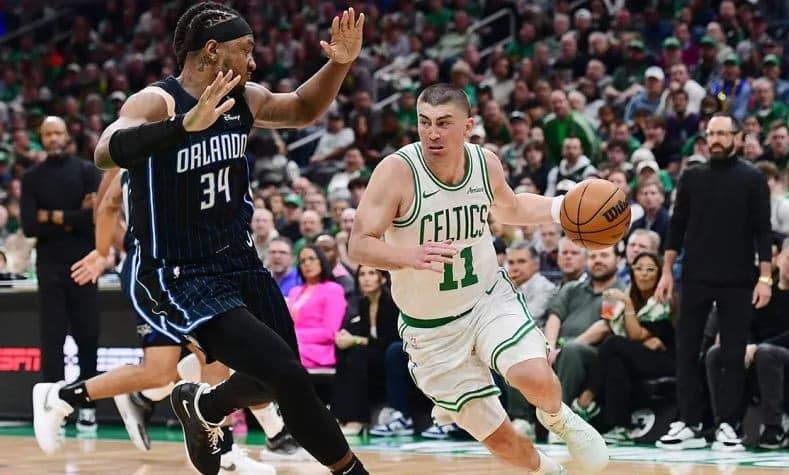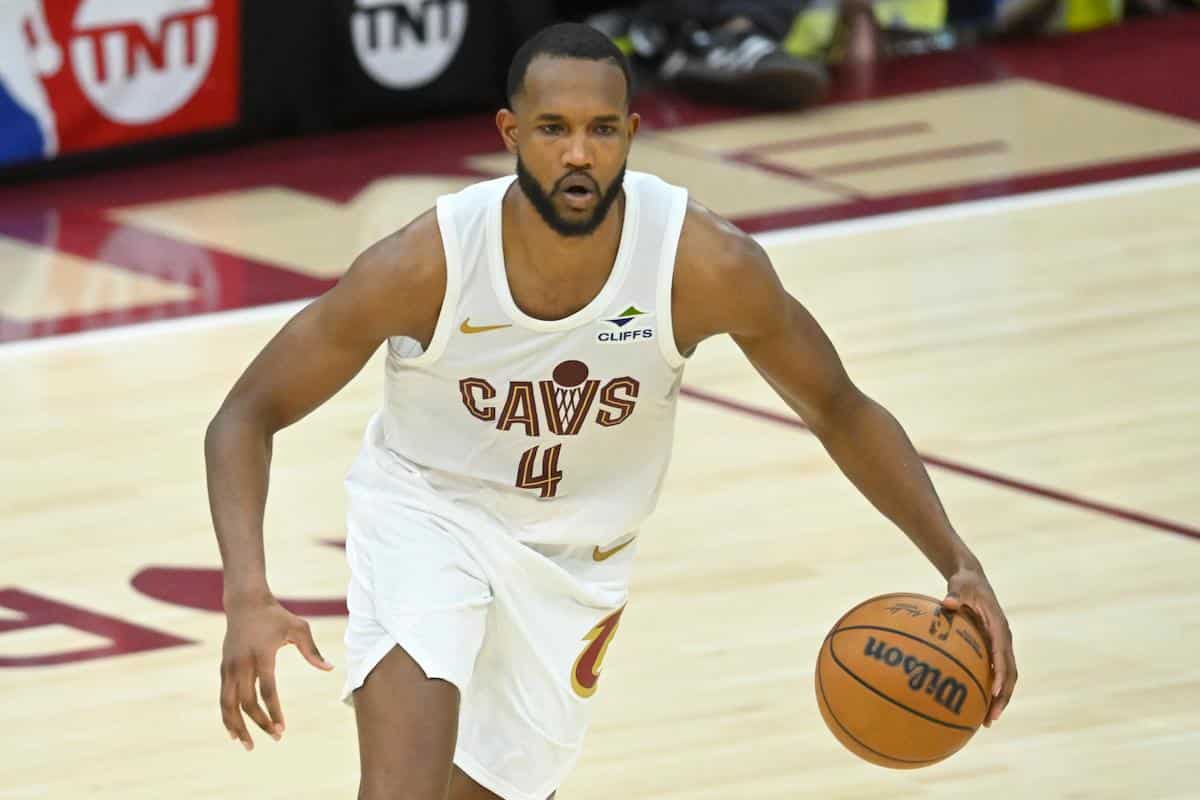Brad Stevens’ tenure as Boston Celtics President of Basketball Operations has been a busy one. Stevens has made nine trades in the approximately nine months he’s been running the Celtics front office. This includes three separate trades Stevens swung on trade deadline day.
Yet, despite all the roster movement, only four players are different than the ones who ended last season on the Celtics. Five, if you count Luke Kornet who only recently rejoined the team.
But what Stevens has done in less than a year is to set up Boston’s cap sheet in a different way than the one he inherited. And it’s taken a couple of twists and turns along the way too.
What we’re going to attempt to do here, in this article and two others coming in subsequent days, is to explain where things are at with the Celtics roster and cap sheet, look a big question Boston has to answer before next season and then try to parse out what the long-term plan might be.
Got all that? Good. Let’s begin, shall we? And to begin, we have to go back to…well…the beginning.
Bill Streicher-USA TODAY Sports
When Brad Stevens took over for Danny Ainge on June 2 of 2021, no one would have guessed he’d make his first trade only 16 days later. And it was a big one.
On June 18, Stevens sent Kemba Walker, the #16 pick in the 2021 NBA Draft (later became Alperen Sengun) and a 2023 second-round pick to the Oklahoma City Thunder in exchange for Al Horford and Moses Brown.
In the immediate aftermath, it looked like Stevens’ objective was clear. He was cleaning up the Celtics cap sheet by shedding the two remaining years of Walker’s contract in exchange for the less-onerous two years (really a year, plus some partially guaranteed money in a second year) for Horford. Had that been all Stevens had done, it would have looked as if Boston was setting up to make a run at being a cap space team in the summer of 2022.
Even when Stevens made his next deal, to bring on Josh Richardson using the remainder of the Gordon Hayward Traded Player Exception, it looked like the Celtics were still keeping the books clean. Richardson only had one year left on his deal at the time Boston acquired him, keeping the 2022 cap space dream alive.
Then… Stevens started handing out extensions like my grandmother used to hand out those weird strawberry candies. You know the ones in the wrapper that looked like a strawberry? And sometimes they were actually good, but sometimes they had that gross filling? But I digress…
After the extensions, any hopes of clearing the decks for a free agent run in the summer of 2022 were gone.
:no_upscale()/cdn.vox-cdn.com/uploads/chorus_asset/file/23261350/1231818101.jpg)
Photo by Brian Babineau/NBAE via Getty Images
To this point, Brad Stevens has added over $220 million in salary to Boston’s books from 2022-23 through 2025-26. That includes extensions for Marcus Smart and Robert Williams, at least $14.5 million for Al Horford, and somewhere between $70 million and $80 million for Derrick White and Daniel Theis.
As it stands today, here’s how the Celtics cap sheet is shaping up for the 2022-23 season:
Guaranteed Salary – 9 Players
· Jaylen Brown – $26.7M
· Aaron Nesmith – $3.8M
· Payton Pritchard – $2.2M
· Marcus Smart – $17.2M
· Jayson Tatum – $30.3M
· Daniel Theis – $8.7M
· Derrick White – $16.4M
· Grant Williams – $4.3M
· Robert Williams – $10.7M
Partially Guaranteed Salary – 2 Players
· Sam Hauser – $300K of $1.5M guaranteed (if team option is exercised)
· Al Horford – $14.5M of $26.5M guaranteed
Free Agents – 2 Players
· Luke Kornet – $1.8M cap hold
· Brodric Thomas – $1.8M cap hold
Dead Money
· Demetrius Jackson – $93K
That’s roughly $140 million in guaranteed money for 11 players, plus the dead money for Demetrius Jackson. And, for as long as Hauser and Horford remain on the roster, their salary counts for the fully guaranteed amounts of $1.5 million and $26.5 million, respectively.
Give that the luxury tax line projects to be at $147 million, it’s a good bet the Boston Celtics will approach the 2022 offseason as if they’ll be a taxpayer for the 2022-23 season.
Let’s flip it and look down the line even further, shall we? For the 2023-24 season, the Celtics have nearly $130 million committed to just nine players:
· Jaylen Brown – $30.7M
· Aaron Nesmith – $5.6M (team option that must be exercised by October 31, 2022)
· Payton Pritchard – $4.0M (team option that must be exercised by October 31, 2022)
· Marcus Smart – $18.6M
· Jayson Tatum – $32.6M
· Daniel Theis – $9.1M
· Derrick White – $17.6M
· Robert Williams – $11.6M
· Demetrius Jackson – $93K (final season of dead money for Jackson)
It’s starting to look like we’ll need to add an extension in here for Grant Williams somewhere too, but that’s a little hard to project at the moment. Let’s see how Grant does throughout the upcoming playoff run. That should give us a better sense of how things may look extension-wise for him this summer.
The luxury tax line for that season projects to be approximately $154 million. Needing to fill seven roster spots with just $24 million in wiggle room, means Boston will likely be a taxpayer again in 2023-24.
:no_upscale()/cdn.vox-cdn.com/uploads/chorus_asset/file/23261461/1233705310.jpg)
Photo by Brian Babineau/NBAE via Getty Images
Brad Stevens said that adding Derrick White and Daniel Theis at the trade deadline, along with signing Marcus Smart and Robert Williams (and the since-traded Josh Richardson) was about giving the Celtics “good players that fit on our roster who are signed to long-term contracts”.
Mission accomplished.
White already seems like a perfect fit. Theis is the Theis everyone loved before, and he’s fairly paid for a semi-versatile backup big. Smart’s and Rob Williams’ extensions seem like more than fair values, given everything they bring to the team on both ends of the floor.
However…it’s still a team with a lot of roster spots to fill. And, given the makeup of recent champions, they might be one star short. But maybe that star develops internally (Where are you at “Lob” Williams fans?). Or maybe they have two stars and a whole slew of really high-end role players to make a Finals run with.
The point here, in this first of a three-part installment, is that Brad Stevens gave the Celtics lots of options moving forward and the only one he took off the table was the outright signing of a free agent via cap space. Sign-and-trade deals, plus traditional trades, remain on the table. And now, Boston has the contracts to stack together to be in the mix for any player that shakes loose on the trade market.
But…we’re getting a little ahead of ourselves here. We’ll come back to that last point in Part 3 of this series. Next up, we’re going to ask, and attempt to answer, a question that is on every Celtics fan’s mind: What happens with Al Horford this summer?





